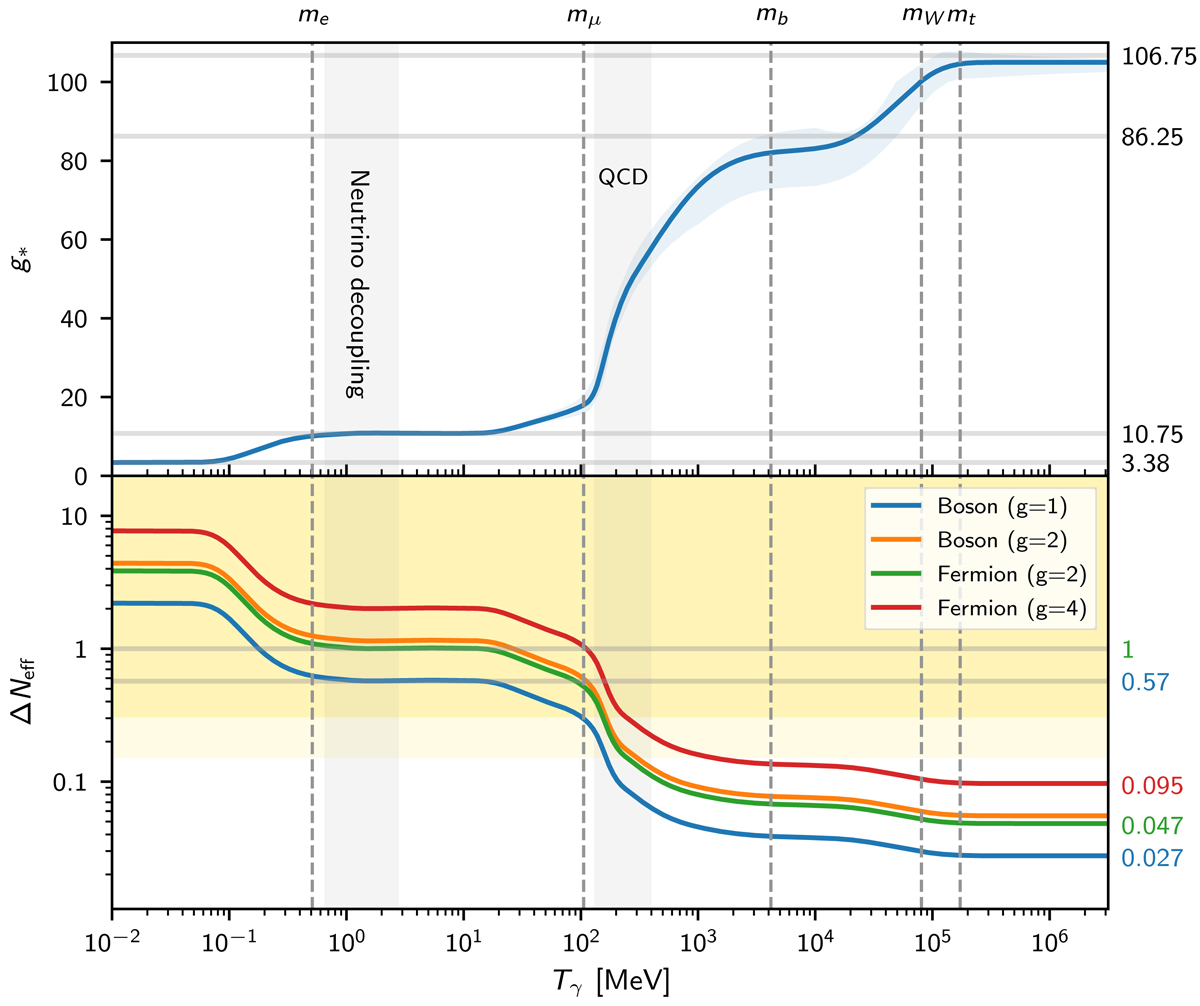Fig. 36.

Constraints on additional relativistic particles. Top: evolution of the effective degrees of freedom for Standard Model particle density, g*, as a function of photon temperature in the early Universe. Vertical bands show the approximate temperature of neutrino decoupling and the QCD phase transition, and dashed vertical lines denote some mass scales at which corresponding particles annihilate with their antiparticles, reducing g*. The solid line shows the fit of Borsanyi et al. (2016) plus standard evolution at Tγ < 1 MeV, and the pale blue bands the estimated ±1σ error region from Saikawa & Shirai (2018). Numbers on the right indicate specific values of g* expected from simple degrees of freedom counting. Bottom: expected ΔNeff today for species decoupling from thermal equilibrium as a function of the decoupling temperature, where lines show the prediction from the Borsanyi et al. (2016) fit assuming a single scalar boson (g = 1, blue), bosons with g = 2 (e.g., a massless gauge vector boson, orange), a Weyl fermion with g = 2 (green), or fermions with g = 4 (red). One-tailed 68% and 95% regions excluded by Planck TT,TE,EE+lowE+lensing+BAO are shown in gold; this rules out at 95% significance light thermal relics decoupling after the QCD phase transition (where the theoretical uncertainty on g* is negligible), including specific values indicated on the right axis of ΔNeff = 0.57 and 1 for particles decoupling between muon and positron annihilation. At temperatures well above the top quark mass and electroweak phase transition, g* remains somewhat below the naive 106.75 value expected for all the particles in the Standard Model, giving interesting targets for ΔNeff that may be detectable in future CMB experiments (see e.g. Baumann et al. 2018).
Current usage metrics show cumulative count of Article Views (full-text article views including HTML views, PDF and ePub downloads, according to the available data) and Abstracts Views on Vision4Press platform.
Data correspond to usage on the plateform after 2015. The current usage metrics is available 48-96 hours after online publication and is updated daily on week days.
Initial download of the metrics may take a while.


